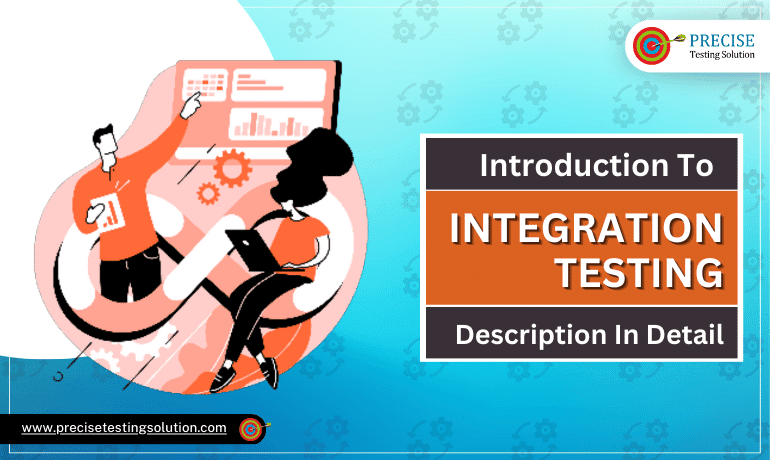The Importance of Integration Testing in Software Development
In this blog post, we will discuss the concept of integration testing, objectives of performing integration testing, methods for performing integration testing, tools used to perform integration testing, and the advantages and disadvantages of performing integration testing for a software application in a detailed and comprehensive manner.
Integration Testing Concept
- Integration Testing, part of functional testing, is the type of software testing process which is performed after doing unit testing of any software application. In simple words, we can say integration testing is the second level of testing done after unit testing.
- Integration Testing is the process of testing, units or individual components of the software or application in a group. The software or application is developed with a number of modules that are coded by different coders or programmers.
- Once the components or modules of the software or application are working independently, then we need to check data flow between the dependent modules and this process is known as integration testing.

Integration Testing Objectives
- Integration Testing’s primary focus is to expose defects in the interaction between software modules when they are integrated.
- Integration Testing focuses on checking data communication among these modules. Hence, it is also known as ‘I & T (Integration and Testing)’, ‘String Testing’ and sometimes ‘Thread Testing’.
- Integration Testing is done so that there should be proper sequence to be followed while performing the testing of any software or application.
- Integration Testing is done to check the interaction of software modules with the database whether it is an erroneous or not.
- Integration Testing is done to test hardware’s compatibility with software. Each module is designed by individual software developer whose programming logic may differ from developers of other modules so, integration testing becomes essential to determine the working of software modules.
Integration Testing Approaches
There are four approaches that can be adopted by test engineers to perform integration testing for any software application: –
1. Big-Bang Incremental Approach: It is one of the simplest non-incremental approaches of integration testing, where all modules of the software or application are combined and the functionality is verified after the completion of individual module testing. In simple words, we can say that all modules of the software or application are simply put together and tested.
| Advantage | Disadvantage |
|---|---|
| Only suitable for smaller size software systems where we can have all the modules which is convenient for all software or applications. | It is very difficult to incorporate as it is not practical to have all the modules prepared before starting integration testing. |
2. Top-down Incremental Approach: In this incremental approach of integration testing, the testing flow starts from the top-level modules towards the lower-level modules of the software or application. As there is possibility that the lower-level modules might not have been developed while beginning with top-level modules.
| Advantage | Disadvantage |
|---|---|
| We don’t have to wait for all the modules to get developed with the use of stubs. Also, we can prioritize the testing of critical integrated modules first. | This type of integration approach requires the creation of many stubs for the simulating the lower-level modules. Also, the lower-level modules might not get tested adequately. |
3. Bottom-up Incremental Approach: In this incremental approach of integration testing, the testing flow starts from lower-level modules, moving upwards to the higher-level modules.
Again, the higher-level modules might not have been developed by the time lower modules are tested. So, in those cases, drivers are used. These drivers simulate the functionality of higher-level modules in order to test lower-level modules.
| Advantage | Disadvantage |
|---|---|
| Similar to Top-down Integration Approach, we don’t have to wait for all the modules to get developed before starting testing. | The top-level modules that are tested at the later stages, might not get tested adequately and can have bugs. |
4. Hybrid or Sandwich Incremental Approach: This type of incremental approach of integration testing is a combination of both top-down and bottom-up incremental approach of integration testing.
In this approach, the integration starts from the middle layer, and testing is carried out in both the directions towards higher-level modules and towards lower-level modules. This way includes benefits of both top-down and bottom-up approaches and helps in faster testing of the module’s interfaces.
| Advantage | Disadvantage |
|---|---|
| We can move both upwards and downwards. So, it is the most time-efficient method with the options to prioritize the modules of the software or application on the top or bottom level. | It is difficult to implement this approach as we have to integrate and move in both the directions of the module for the software or application which is to be tested. |
Integration Testing Tools
Following are two of the best and most popular tools that are used to perform integration testing for any software or application: –
- Citrus – One of the most popular and commonly used integration testing tools with support of Java programming language. Being open-source or free to use it helps in developing automated integration tests for HTTP REST, TCP/IP, SOAP, FTP, XML, JSON, etc. message protocols and data formats to achieve end-to-end use case testing.
- TESSY – Another popular and commonly used integration testing tool that helps in automating the unit and integration testing cycle for the embedded software or application with the support of programming languages like C and C++. TESSY helps us to find the code coverage of an application. With the help of CTE (classification of tree editor), we can design the test cases and edit the test data by using TDE (test data Editor).
Integration Testing Benefits
Following is some of the major benefits of performing integration testing: –
- It helps in ensuring that the integrated modules work properly before moving to the system testing of the complete software or application.
- Bugs found at this level are easier to resolve as compared to the one found at later stages of system and acceptance testing.
- It improves test coverage and provides an additional level of reliability.
Integration Testing Drawbacks
Apart from the benefits as mentioned above of performing integration testing, there are following some drawbacks associated to it as well:
- It is very difficult to perform as compared to system testing in which we can consider the software or application as a black box.
- It is very time-consuming process to test all the interface between the differently connected modules.
- It requires the creation of stubs and drivers which if not created correctly can result in inadequate testing.
Conclusion
So, in the end, we can conclude this blog post by saying that integration testing is an important part of the SDLC as it makes it easier to find the defect when two or more modules are integrated, which helps in finding the defects at an early stage. It ensures that all integrated modules of the software or application work properly as expected.
Contact, our team at Precise Testing Solution to avail our functional testing services including unit, integration and system testing. We are always available to help.
For more information, Visit Our Website at www.precisetestingsolution.com
or call our office @ 0120-3683602
or you can send us an email at [email protected]
CI/CD Process: How to Improve Software Quality and Reducing Costs
Within the fast-paced world of computer programs. The process
The Importance of Data Integration Testing for Improve Quality Assurance
Discover the crucial role of data integration testing in


